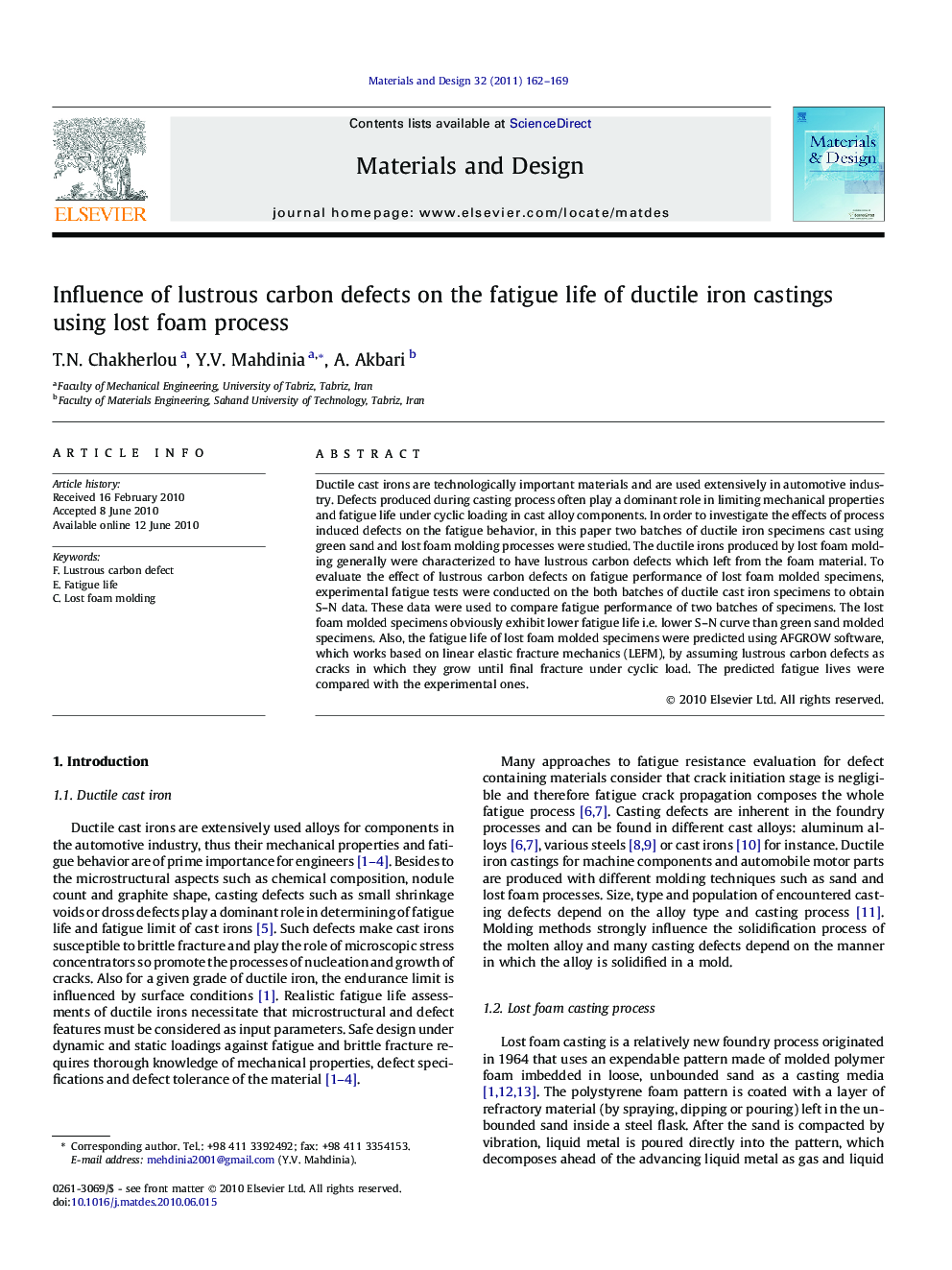| Article ID | Journal | Published Year | Pages | File Type |
|---|---|---|---|---|
| 831708 | Materials & Design (1980-2015) | 2011 | 8 Pages |
Ductile cast irons are technologically important materials and are used extensively in automotive industry. Defects produced during casting process often play a dominant role in limiting mechanical properties and fatigue life under cyclic loading in cast alloy components. In order to investigate the effects of process induced defects on the fatigue behavior, in this paper two batches of ductile iron specimens cast using green sand and lost foam molding processes were studied. The ductile irons produced by lost foam molding generally were characterized to have lustrous carbon defects which left from the foam material. To evaluate the effect of lustrous carbon defects on fatigue performance of lost foam molded specimens, experimental fatigue tests were conducted on the both batches of ductile cast iron specimens to obtain S–N data. These data were used to compare fatigue performance of two batches of specimens. The lost foam molded specimens obviously exhibit lower fatigue life i.e. lower S–N curve than green sand molded specimens. Also, the fatigue life of lost foam molded specimens were predicted using AFGROW software, which works based on linear elastic fracture mechanics (LEFM), by assuming lustrous carbon defects as cracks in which they grow until final fracture under cyclic load. The predicted fatigue lives were compared with the experimental ones.
